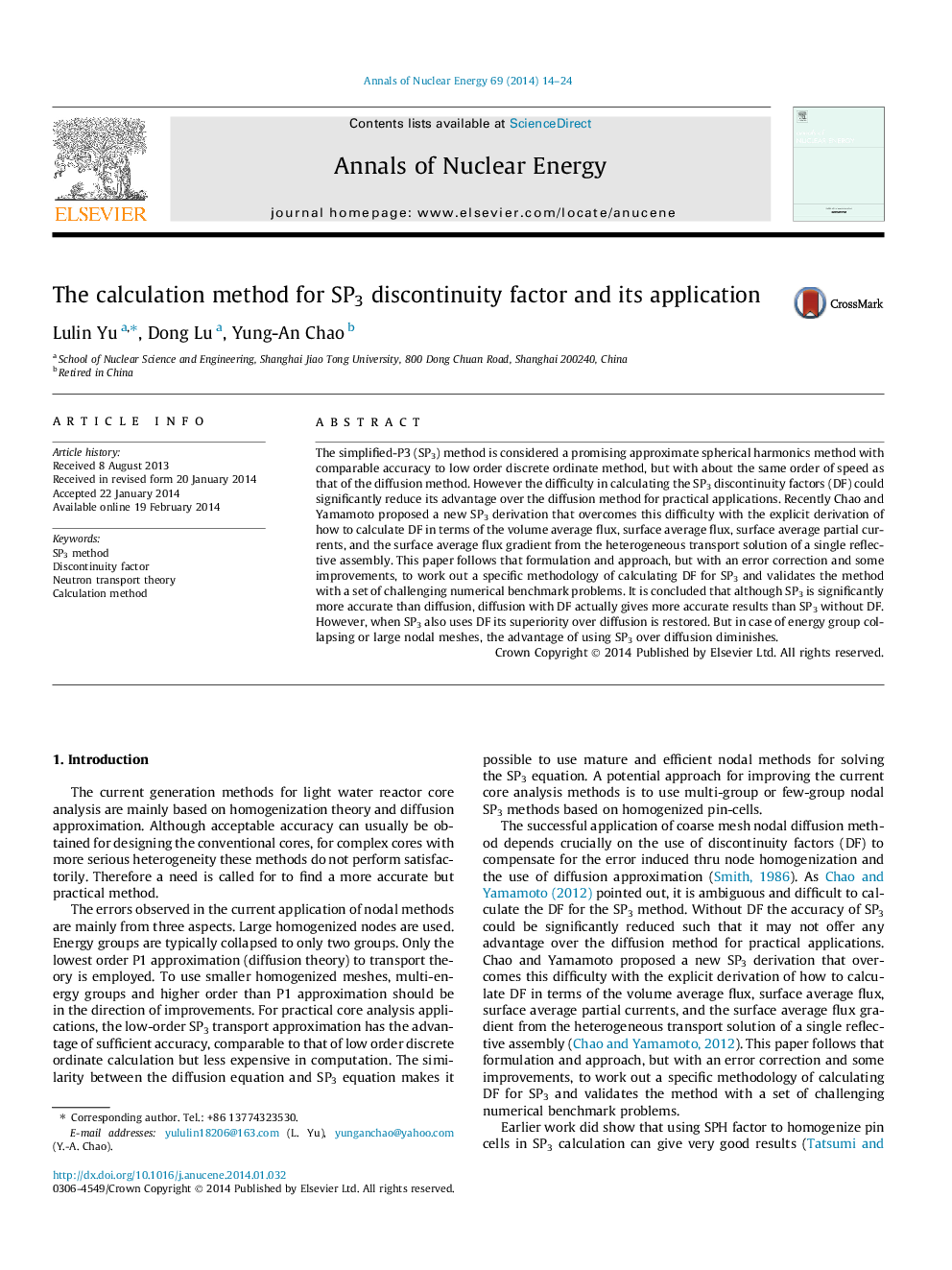| Article ID | Journal | Published Year | Pages | File Type |
|---|---|---|---|---|
| 8069257 | Annals of Nuclear Energy | 2014 | 11 Pages |
Abstract
The simplified-P3 (SP3) method is considered a promising approximate spherical harmonics method with comparable accuracy to low order discrete ordinate method, but with about the same order of speed as that of the diffusion method. However the difficulty in calculating the SP3 discontinuity factors (DF) could significantly reduce its advantage over the diffusion method for practical applications. Recently Chao and Yamamoto proposed a new SP3 derivation that overcomes this difficulty with the explicit derivation of how to calculate DF in terms of the volume average flux, surface average flux, surface average partial currents, and the surface average flux gradient from the heterogeneous transport solution of a single reflective assembly. This paper follows that formulation and approach, but with an error correction and some improvements, to work out a specific methodology of calculating DF for SP3 and validates the method with a set of challenging numerical benchmark problems. It is concluded that although SP3 is significantly more accurate than diffusion, diffusion with DF actually gives more accurate results than SP3 without DF. However, when SP3 also uses DF its superiority over diffusion is restored. But in case of energy group collapsing or large nodal meshes, the advantage of using SP3 over diffusion diminishes.
Related Topics
Physical Sciences and Engineering
Energy
Energy Engineering and Power Technology
Authors
Lulin Yu, Dong Lu, Yung-An Chao,
